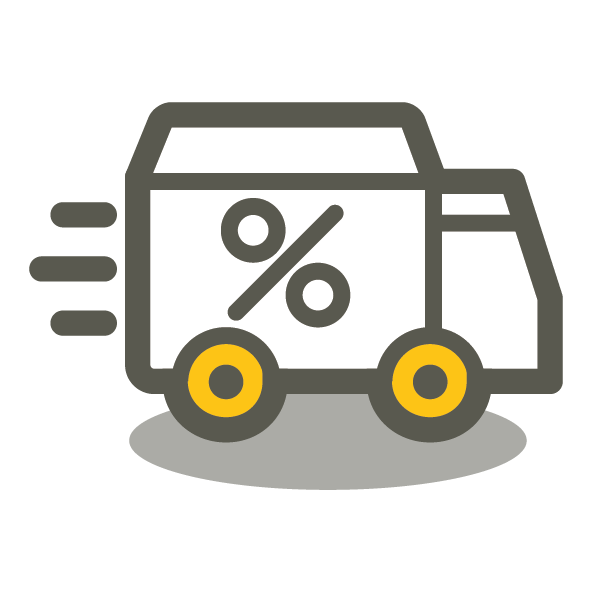The Logistics industry is experiencing a significant makeover with the advent of ‘Warehouses of the Future,’ incorporating cutting-edge technologies such as robotics, AI, and sustainability measures to enhance operational efficiency. However, transformation comes at a significant cost and feasibility will need to be investigated with consideration of both available tax reliefs and timing of investments. The opportunity cost of not investing, will also need to be factored in as businesses will need to remain competitive in the evolving marketplace.
In this article Donna Kenyon, from Menzies Transport & Logistics team, explores the potential for technological transformation and delves into the tax implications of adopting new technologies, with an emphasis on R&D tax relief schemes and capital allowances.
‘Warehouses of the Future’ are gaining traction
The concept of warehouses of the future is slowly gaining traction in the logistics industry. They are fundamentally built on a variety of technologies such as robotics and artificial intelligence, as well as sustainability elements to streamline operations and improve productivity.
The growing robotics market
A report by Mordor Intelligence suggests that the global warehouse robotics market is expected to grow at a compound annual growth rate of CAGR of 6.86% per annum during the forecast period of 2023-2028. The study also highlights the increasing demand for automation in warehouse operations to improve efficiency and reduce operational costs.
Technology adoption
Technology trends are becoming increasing popular, with Amazon, DHL, Coca-Cola and Nestle having carried out implementation of warehousing projects with many more who are intending to either automate or partially-automate their warehouses over the coming years. Examples of using combinations of technologies have also been seen, particular in Nestle’s warehouse where they have combined larger and small robotics together in new ways to achieve their goals. Warehouses of the future are likely to incorporate the use of a range of new technologies:
Robotics/automation
Advanced robotics and automation technologies to streamline the picking, packing, and shipping processes can be implemented. The use of robotics in the warehouse industry has revolutionised the way businesses operate. By automating tasks that were previously done manually, robotics have increased efficiency and safety, and reduced costs. With the help of robotics, warehouses can now handle large volumes of goods with greater speed and accuracy, allowing for faster order fulfilment and reduced lead times. Additionally, robots can be programmed to perform repetitive tasks, freeing up employees to focus on more complex and value-added activities.
AI
The use of AI and machine learning in the warehouse industry has become increasingly popular in recent years as it has the potential to integrate many elements of different warehouse processes. Advanced analytics can provide more user-friendly and accurate data on many aspects such as inventory levels to shipping times, managers can make more informed decisions and reduce waste.
Sustainability
This includes incorporate environmentally-friendly features such as solar panels, energy efficient lighting/fixtures and fittings, reducing a company’s carbon footprint and saving on energy costs.
When is the right time to invest?
Technologies are developing so fast that it is important for SMEs to keep up to date with AI and technology advancements so they can invest and take action at the right time to also benefit from the efficiencies these could bring.
What tax reliefs are available for Warehouse of the future projects?
Investing in warehouses of the future can bring significant benefits to businesses, including increased efficiency, reduced costs, and improved customer service. By taking advantage of tax reliefs available, businesses can make these investments more affordable and accelerate the adoption of new technologies.
Implementation and development of technology and sustainable technologies can be costly, and it is important for businesses to consider the below tax reliefs available when investing in these technologies:
R&D tax relief
This scheme can provide tax relief on qualifying R&D activities related to the development of new technologies and processes. To determine if your warehouse project qualifies for R&D tax relief, you should assess whether it involves the creation of new or improved technology (to include an advance within science and technology), and the resolution of scientific or technological uncertainties. The R&D tax relief scheme has changed quite significantly over the past few months, for accounting periods beginning on or after 1 April 2024, the R&D scheme is now a merged scheme (rather than the previous SME and large schemes) to be implemented at the current RDEC rate of 20%. Data licences and cloud computing costs are now amongst costs which can be included within a claim, however overseas costs are restricted from 1 April 2024.
Capital allowances
The Annual Investment Allowance (AIA) and full-expensing reliefs allow businesses to claim tax relief on the cost of qualifying plant and machinery, including robotics, automation equipment, and solar panels and other green technologies.
Conclusion and next steps
The journey toward efficient and cost-effective warehouses of the future is promising; the integration of cutting-edge technologies is poised to enhance operational efficiency and dramatically shift the landscape of the Logistics industry. However, there is much to weigh up when considering investing into new technologies.
As experts in the Transport & Logistics sector, Menzies are here to provide guidance for your business on your important investment decisions and can help with tax and financial planning and help you to decide when is the right time to invest, taking into consideration the maturity of technologies, tax schemes to ease the financial burden, the opportunity cost of not investing and the ROI potential for future projects.
The rules around the timing of tax reliefs as well as the recent changes to the R&D tax relief schemes can be complex, so it’s helpful to seek advice from a specialist as early as possible in the process who can guide you through the process with the aim of maximising the reliefs available.
Please contact someone from our Transport & Logistics team today, to discuss any ‘Future Warehouse’ aspirations, plans or projects or contact us via the below contact form:











